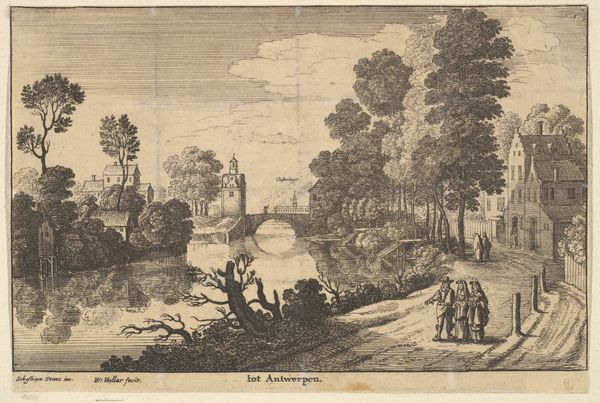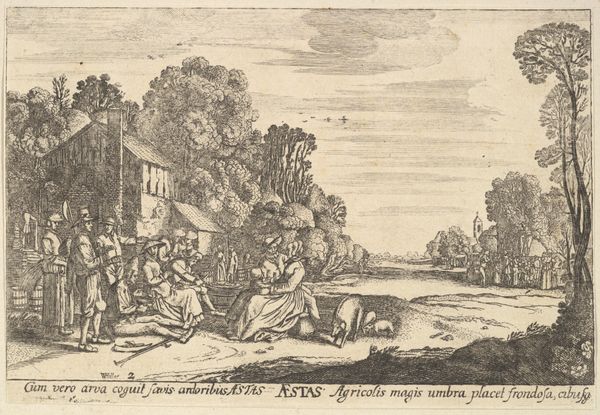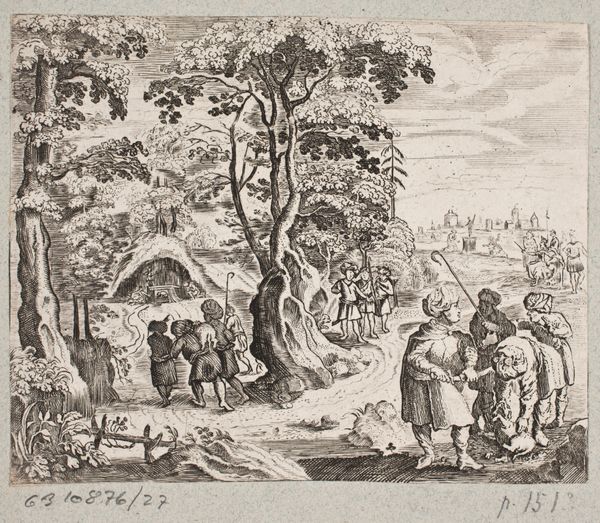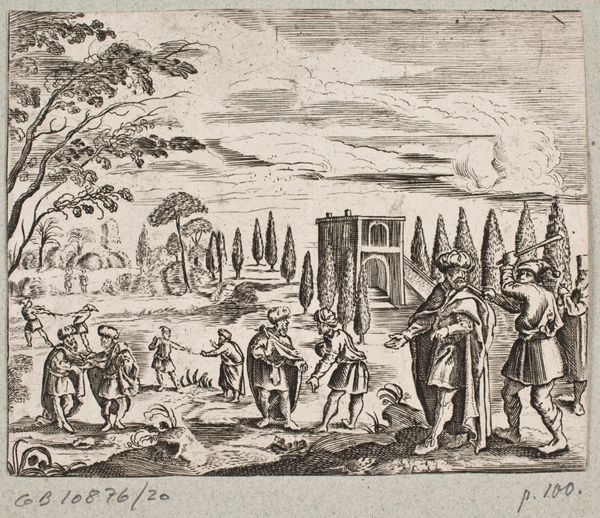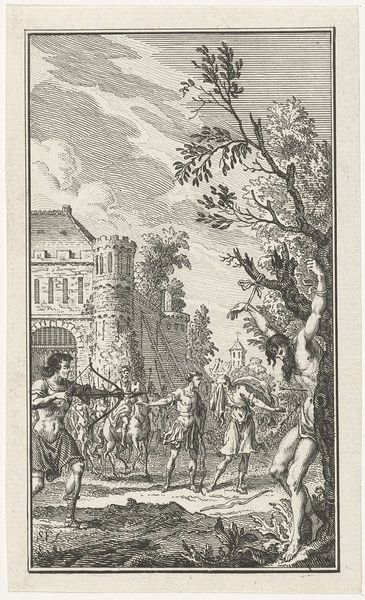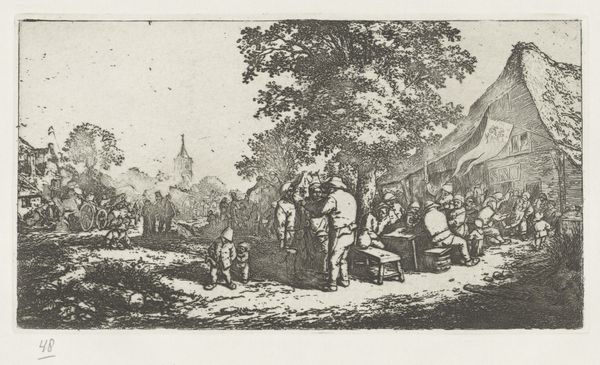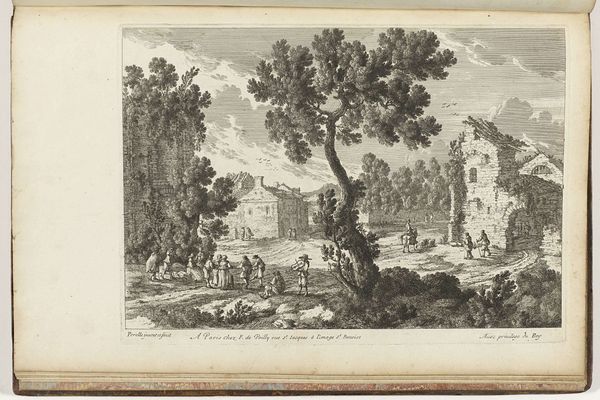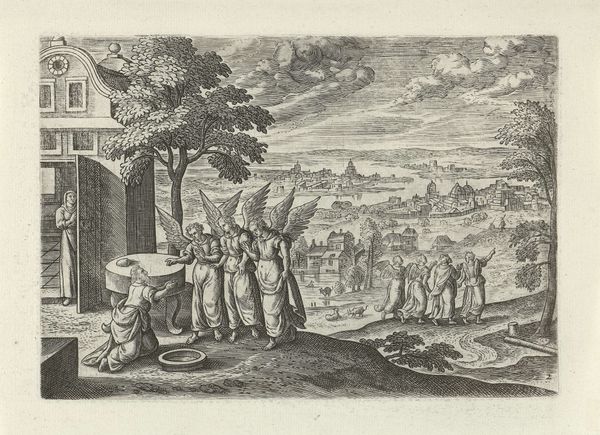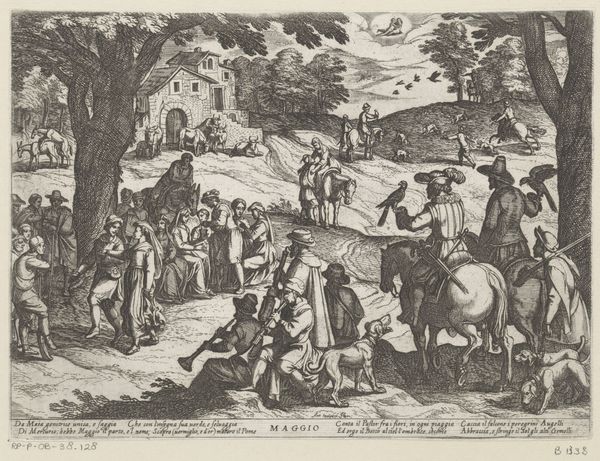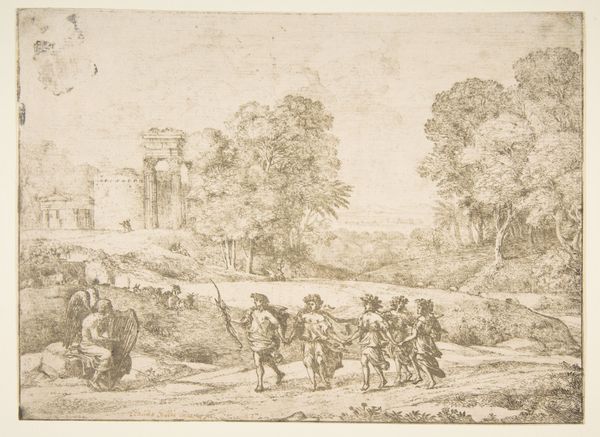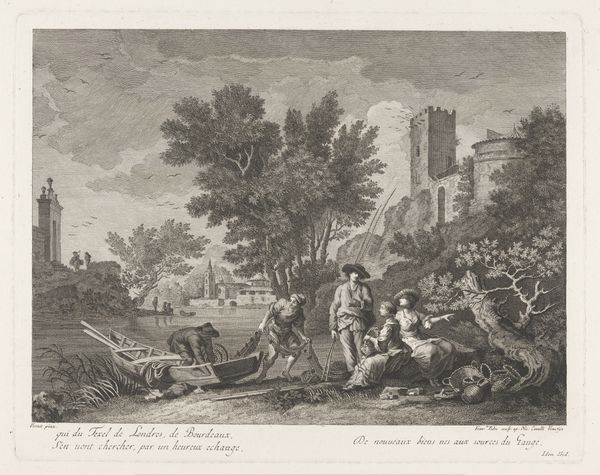
drawing, print, etching, engraving
#
pen and ink
#
drawing
#
ink drawing
#
baroque
# print
#
etching
#
landscape
#
engraving
Copyright: National Gallery of Art: CC0 1.0
Editor: This print, "Abraham and the Three Angels," is an engraving by Herman van Swanevelt. I’m immediately struck by the sharp contrast between the ruined buildings in the background and the figures seemingly on the cusp of entering the city. What narratives do you see emerging here? Curator: Well, situating this work within its historical context – considering the prominence of religious narratives and the societal structures they reinforced - how does Swanevelt's composition play with or challenge these power dynamics? The angels themselves, rendered with a certain ambiguity, stand at a threshold. Consider their gazes. Do they reflect divine authority, or something more… nuanced, questioning the accepted order? Editor: Nuanced, definitely. I hadn’t thought about the figures as potentially subversive. It's interesting you draw a parallel between their literal position in the image and questioning accepted order. Curator: The crumbling architecture, a staple of Baroque landscapes, can be seen as a symbol of decaying societal structures, while the figures could represent emerging ideologies, hesitant yet determined. Editor: So the landscape isn’t just a backdrop; it’s actively participating in this negotiation between the old and the new. Do you think Swanevelt might be subtly commenting on religious shifts of his time? Curator: Precisely! Think about how landscape art was evolving then. Swanevelt and his contemporaries were often grappling with complex themes of power, faith, and societal transformation, frequently masked behind seemingly conventional subject matter. We must ask ourselves, whose stories were deemed worthy of representation and who were excluded? This becomes even more relevant when examining representations of race and gender within these supposedly “universal” narratives. Editor: That makes me reconsider how I view these older works. It’s easy to accept the surface-level story without digging into these undercurrents. Thank you! Curator: Remember, the role of art, and particularly historical art, is not just to depict, but to incite questioning of how we see the world and our own position within it.
Comments
No comments
Be the first to comment and join the conversation on the ultimate creative platform.



